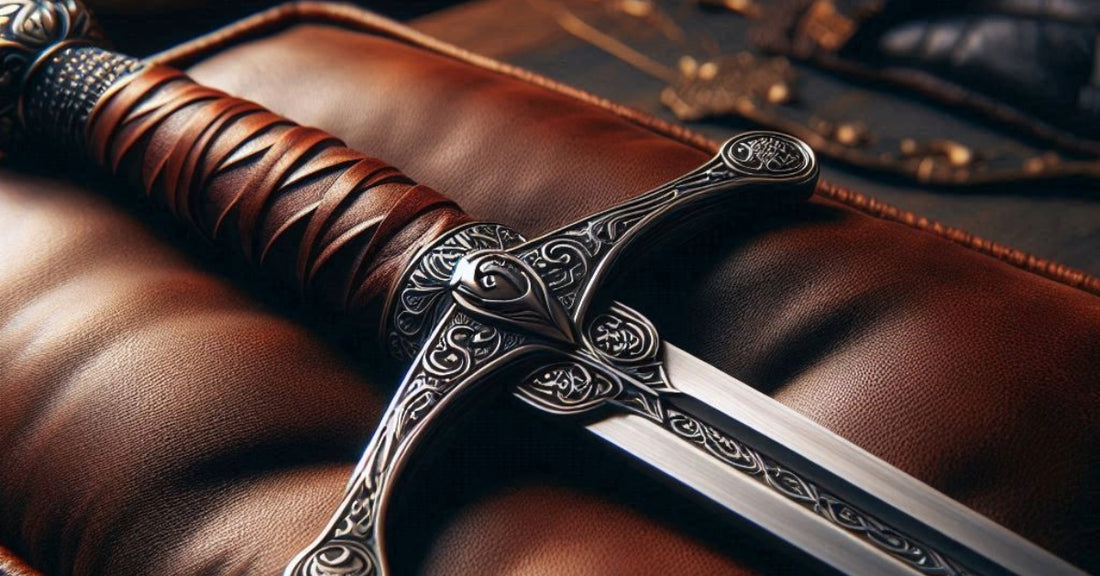
Types of Medieval Sword: Longswords, Broadswords, and More
Share
Medieval swords are fascinating artifacts that reflect the rich history and craftsmanship of the Middle Ages. Collectors and enthusiasts often seek these weapons for their historical significance and aesthetic appeal. In this blog, we’ll explore some of the most iconic medieval sword types, including longswords, broadswords, and more.
Longswords
The longsword, also known as the hand-and-a-half sword, is one of the most recognizable medieval swords. Characterized by its long, double-edged blade and cruciform hilt, the longsword was designed for both cutting and thrusting. It was typically wielded with two hands, providing greater leverage and power in combat. Longswords were popular from the late 13th to the early 17th century and were used by knights and soldiers across Europe.
Key Features:
- Long, double-edged blade
- Cruciform hilt
- Versatile for both cutting and thrusting
- Typically used with two hands
Broadswords
Broadswords, often referred to as basket-hilted swords, feature a wide, straight blade designed for powerful cutting blows. Unlike the longsword, the broadsword was primarily a one-handed weapon, allowing the wielder to use a shield or another weapon in the off-hand. The basket hilt provided excellent hand protection, making it a favored choice for close combat. Broadswords were widely used from the 16th to the 18th century.
Key Features:
- Wide, straight blade
- Basket hilt for hand protection
- Designed for one-handed use
- Ideal for powerful cutting blows
Other Notable Medieval Swords
-
Arming Sword: Also known as the knightly sword, the arming sword was a single-handed weapon used by knights during the High Middle Ages. It featured a straight, double-edged blade and was often paired with a shield.
-
Falchion: The falchion was a single-edged sword with a curved blade, resembling a machete. It was favored for its chopping ability and was used by both knights and common soldiers.
-
Greatsword: Larger than the longsword, the greatsword required two hands to wield and was used for powerful, sweeping attacks. It was particularly effective against heavily armored opponents.
-
Rapier: Although not strictly medieval, the rapier emerged in the late Renaissance and was known for its slender, sharply pointed blade. It was primarily used for thrusting and became popular in civilian duels.
Conclusion
Medieval swords come in various shapes and sizes, each with its unique characteristics and historical significance. Whether you’re a collector, reenactor, or history enthusiast, understanding the different types of medieval swords can enhance your appreciation for these remarkable weapons. From the versatile longsword to the formidable broadsword, each sword type tells a story of the era in which it was used.
Explore our collection of medieval swords on our store and find the perfect piece to add to your collection!
